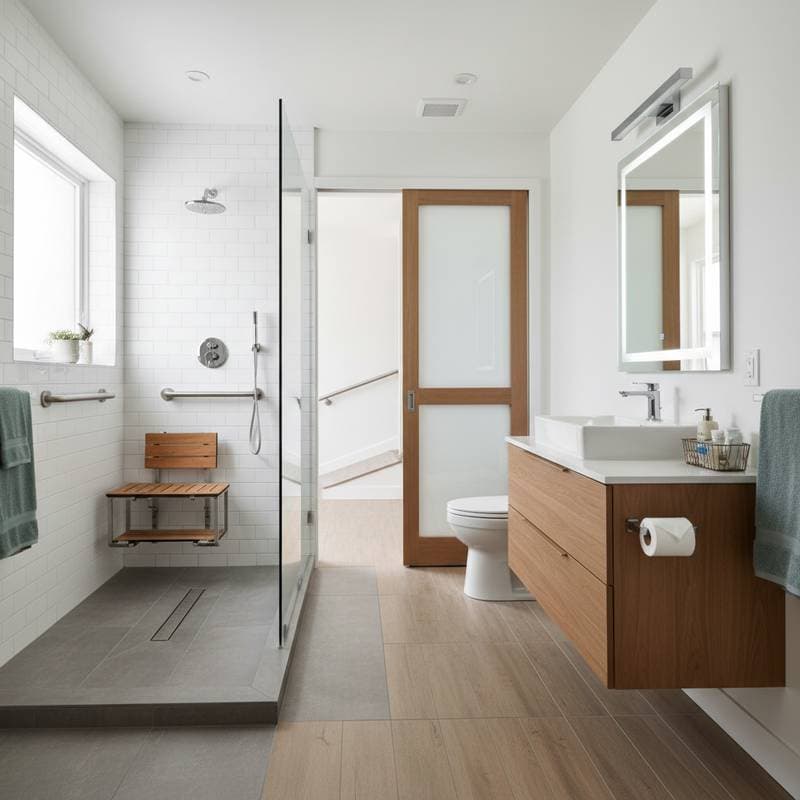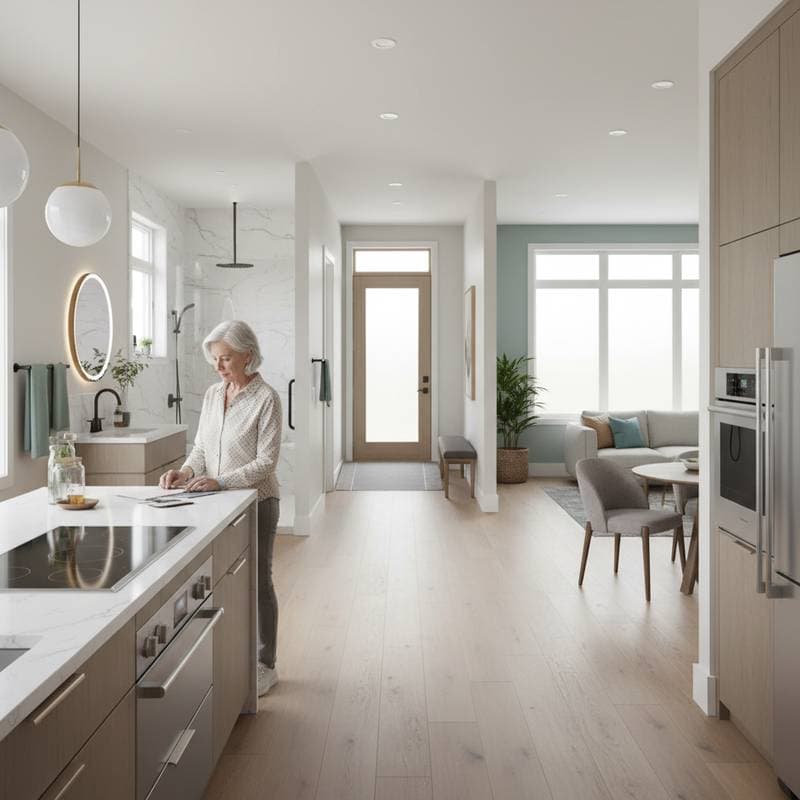Understanding Multigenerational Homes
Multigenerational homes accommodate multiple family generations under one roof. These residences balance communal areas with private spaces to foster connection and autonomy. Families choose this setup for caregiving, financial efficiency, or cultural traditions.
In 2025, demand grows due to aging populations and housing affordability challenges. Builders incorporate smart technology and flexible designs to meet evolving needs. This approach ensures homes adapt over time without major renovations.
Common Layout Types
Several layouts suit multigenerational living. Each option varies in complexity and space requirements.
Accessory Dwelling Units (ADUs)
ADUs provide separate living quarters on the same property. These units include kitchens, bathrooms, and bedrooms, often attached or detached from the main house. Ideal for privacy, ADUs range from 400 to 800 square feet.
Construction focuses on accessibility features like wide doorways and zero-step entries. Families use ADUs for elderly relatives or grown children starting out.
In-Law Suites
In-law suites integrate into the primary home, typically on the ground floor. They feature private entrances, full baths, and compact kitchens. This layout promotes interaction while maintaining separation.
Space allocation averages 300 to 500 square feet. Designers prioritize soundproofing and independent utilities to enhance comfort.
Shared Main Floor with Private Wings
This design divides the home into wings for different generations. Common areas like kitchens and living rooms remain central. Bedrooms and baths occupy separate sections.
Homes of this type span 2,500 to 4,000 square feet. Zoning considerations ensure each wing meets habitability standards.
Realistic Cost Breakdowns
Costs depend on location, size, and materials. National averages provide a starting point for budgeting.
Base Construction Expenses
New builds for multigenerational homes average $250,000 to $500,000. This range covers a 2,500-square-foot structure with standard finishes. Regional factors, such as labor rates in urban areas, can increase totals by 20 to 30 percent.
Renovations to existing homes cost $100,000 to $300,000. These projects focus on additions like suites or ADUs, minimizing disruption to current occupants.
Material and Feature Add-Ons
Energy-efficient windows and insulation add $10,000 to $20,000. Universal design elements, including grab bars and lever handles, contribute $5,000 to $15,000.
Smart home systems for lighting and security range from $2,000 to $8,000. High-end kitchens in shared spaces may require $15,000 to $25,000.
Hidden Costs to Consider
Permits and inspections total $2,000 to $5,000. Site preparation, such as grading or utility extensions, adds $5,000 to $10,000.
Ongoing expenses include higher utility bills, estimated at 15 to 25 percent above single-family homes. Budget for these in long-term planning.
Construction Timelines
Timelines vary by project scope and external factors. Clear expectations help manage family disruptions.
New Construction Schedules
Full builds take 6 to 12 months. Site preparation and foundation work span 1 to 2 months. Framing and rough-ins follow for 2 to 3 months.
Finishing interiors and exteriors requires 3 to 5 months. Weather delays in rainy seasons can extend timelines by 4 to 6 weeks.
Renovation Timelines
Renovations complete in 3 to 6 months. Demolition and structural changes take 2 to 4 weeks. Electrical and plumbing updates follow for 4 to 6 weeks.
Final installations, including flooring and fixtures, last 4 to 8 weeks. Phased approaches allow partial occupancy during the process.
Planning and Budgeting Steps
Effective planning starts with family discussions. Align on needs, space divisions, and financial contributions.
- Assess current home or site suitability. Evaluate square footage, zoning laws, and expansion potential.
- Consult architects or builders for custom designs. Review blueprints for flow and accessibility.
- Develop a detailed budget. Allocate funds for construction, contingencies, and furnishings.
- Secure financing options. Explore home equity loans or construction mortgages tailored to multigenerational projects.
- Obtain necessary permits. Submit plans to local authorities for approval, addressing building codes.
Involve all generations in decisions to ensure buy-in and functionality.
Safety and Accessibility Features
Safety forms the foundation of multigenerational designs. Incorporate features that prevent accidents and support mobility.
Non-slip flooring and ample lighting reduce fall risks. Smoke detectors and carbon monoxide alarms must cover all areas.
Ramps and elevators serve multi-level homes. Emergency call systems connect suites to main living spaces.
Compliance with ADA guidelines enhances usability. Professional inspections verify installations meet standards.
Permits and Regulatory Considerations
Local regulations govern multigenerational builds. Research zoning ordinances early to avoid setbacks.
Many areas require separate entrances for ADUs. Occupancy limits influence suite sizes and utility capacities.
Environmental reviews apply in certain zones. Energy codes mandate efficient systems to lower long-term costs.
Engage permit expediters if navigating complex approvals. This step streamlines the process and prevents fines.
Long-Term Maintenance Strategies
Multigenerational homes demand proactive upkeep. Regular maintenance preserves value and functionality.
Schedule annual HVAC servicing and roof inspections. Budget $1,000 to $3,000 yearly for routine tasks.
Shared spaces benefit from durable materials like quartz counters and vinyl plank flooring. These resist wear from high traffic.
Plan for future adaptations, such as adding medical alert integrations. Flexible designs accommodate changing needs.
Building a Lasting Family Legacy
Multigenerational homes create enduring bonds and financial stability. Thoughtful planning yields spaces that evolve with families.
Invest in quality craftsmanship to minimize repairs. These residences support independence while strengthening ties.
Start your project with professional guidance. The result offers comfort, security, and shared memories for years ahead.











